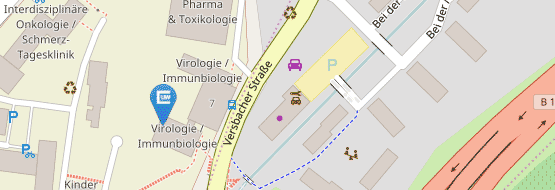Project P05
P05 Role of NFAT signaling in memory inflation and T cell-mediated immune protection against CMV
Prof. Dr. Luka Cicin-Sain & PD Dr. Friederike Berberich-Siebelt
Cytomegalovirus (CMV) infection is a major risk for transplant recipients. Transplantation requires extensive immunosuppression to avoid transplant rejections or – in the case of hematopoietic stem cell transplantation – to avoid adverse immune reactions of co-transplanted immune cells towards the host (a condition called graft-versus-host disease / GvHD). Immunosuppression predisposes the host to opportunistic infections, which normally do not cause harm to healthy individuals. CMV is among the most common opportunistic infections in this vulnerable group of patients.
Transplant immune reactions, so-called allo-reactions, occur when a subset of immune cells, i.e. T lymphocytes, recognize foreign molecules that differ between the transplant recipient and the transplanted graft. The same cells are critically important in the control of CMV infection. Therefore, drugs that are provided to transplant recipients to mute their allo-reaction also impair their ability to respond and control CMV infection. This project explores the exact molecular mechanisms required for T-cell responses to CMV infection.
A major target of immunosuppressive drugs is the intracellular signaling pathway that involves the family of nuclear factor of activated T-cells or NFAT. Two NFAT molecules, called NFATc1 and NFATc2, are predominant in mature T lymphocytes, both in mice and in humans. Therefore, to understand the role of NFAT molecules in T-cell responses to CMV infection, we are testing antiviral immune responses in NFAT-deficient mice, lacking NFATc1, NFATc2, or both. The project aims to understand the role of NFAT in the induction of T-cell responses to CMV in the early stages of infection, during the expansion of T cells and in their migration from sites of initial T-lymphocyte activation (for instance in lymph nodes) to organs, in which the virus is replicating and causing disease (for instance in lungs or liver). Furthermore, the project aims to understand T-cell memory formation.
Finally, our project aims to define the ability of T cells that lack NFAT molecules to control CMV infection after hematopoietic stem cell transplantation. Since we know that NFAT-deficient T cells protect from GvHD, we will evaluate whether this is still the case under CMV infection and, vice versa, if NFAT-deficient T cells are still able to control CMV under GvHD-inducing conditions. In summary, we hope to define the necessities of T cells to fight CMV, while avoiding adverse side effects like GvHD aiming for NFAT-directed drug development for the benefit of transplant patients.

